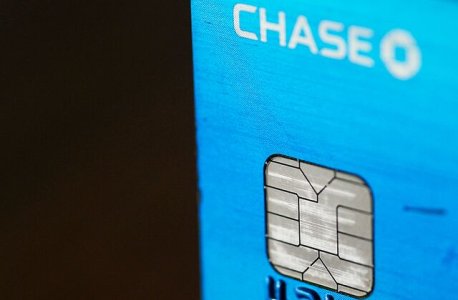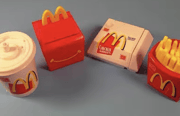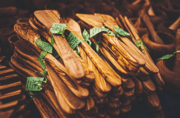Don’t ignore that $4.19 charge—Chase customers are finding their accounts quietly drained with sneaky tip charges
- Replies 0
Have you ever glanced at your credit card statement and thought, “Wait a minute… I don’t remember spending that much at dinner!”?
If you’re a Chase customer—or, frankly, anyone who dines out or swipes a card—this story is your wake-up call
At The GrayVine, we believe in empowering our community to spot the sneaky charges that can quietly nibble away at your hard-earned money. So, let’s dig into the latest cautionary tale making waves among Chase cardholders and arm you with the know-how to protect your wallet.
It all started with a simple meal and a sharp-eyed Chase customer. After enjoying a $27.96 dinner at a local restaurant, this savvy diner decided not to leave a tip on the receipt—maybe they planned to tip in cash, or perhaps the service didn’t warrant it.
The receipt clearly showed the total, the tip options (15%, 20%, 25%), and a checkbox for “no tip.” All seemed above board.
But when the customer checked their Chase Freedom Unlimited statement, they were in for a shock: the restaurant had charged them $32.15—the exact total if they’d left a 15% tip ($4.19) on the card. That’s right, a tip they never authorized was quietly tacked onto their bill.
Fortunately, this customer didn’t let the matter slide. They disputed the charge with Chase, and—credit where it’s due—JPMorgan Chase refunded the $4.19 within minutes.
But the incident sparked outrage online, with fellow diners and Chase users calling out the restaurant for what many called “straight up theft.”
How can a restaurant just add a tip you didn’t approve? Sometimes, it’s a simple mistake—maybe a server misread the receipt, or a glitch in the point-of-sale system defaulted to a tip.
But other times, it’s a more troubling sign of shady practices, especially if it happens repeatedly.
Former restaurant workers chimed in online, explaining that if a business racks up too many “chargebacks” (disputed charges), they can face higher credit card processing fees—or even lose the ability to accept cards altogether.
So, while some establishments might try to sneak in extra charges, it’s a risky game.
Sadly, this isn’t an isolated incident. In recent months, diners across the country have reported all sorts of eyebrow-raising surcharges:
Also read: Don’t fall for these traps! Scammers are running a new “3-phase” hack that could drain your bank accounts fast
1. Always Review Your Receipts and Statements
Also read: Still paying for these hidden subscriptions? They could be draining $276 a year
4. Be Wary of “Fees” and Ask Questions

Have you ever caught a sneaky charge on your statement? Did you get your money back—or hit a wall with customer service? Do you have tips for keeping your finances secure in the age of digital payments and surprise fees?
If you’re a Chase customer—or, frankly, anyone who dines out or swipes a card—this story is your wake-up call
At The GrayVine, we believe in empowering our community to spot the sneaky charges that can quietly nibble away at your hard-earned money. So, let’s dig into the latest cautionary tale making waves among Chase cardholders and arm you with the know-how to protect your wallet.
It all started with a simple meal and a sharp-eyed Chase customer. After enjoying a $27.96 dinner at a local restaurant, this savvy diner decided not to leave a tip on the receipt—maybe they planned to tip in cash, or perhaps the service didn’t warrant it.
The receipt clearly showed the total, the tip options (15%, 20%, 25%), and a checkbox for “no tip.” All seemed above board.
But when the customer checked their Chase Freedom Unlimited statement, they were in for a shock: the restaurant had charged them $32.15—the exact total if they’d left a 15% tip ($4.19) on the card. That’s right, a tip they never authorized was quietly tacked onto their bill.
Fortunately, this customer didn’t let the matter slide. They disputed the charge with Chase, and—credit where it’s due—JPMorgan Chase refunded the $4.19 within minutes.
But the incident sparked outrage online, with fellow diners and Chase users calling out the restaurant for what many called “straight up theft.”
How can a restaurant just add a tip you didn’t approve? Sometimes, it’s a simple mistake—maybe a server misread the receipt, or a glitch in the point-of-sale system defaulted to a tip.
But other times, it’s a more troubling sign of shady practices, especially if it happens repeatedly.
Former restaurant workers chimed in online, explaining that if a business racks up too many “chargebacks” (disputed charges), they can face higher credit card processing fees—or even lose the ability to accept cards altogether.
So, while some establishments might try to sneak in extra charges, it’s a risky game.
Sadly, this isn’t an isolated incident. In recent months, diners across the country have reported all sorts of eyebrow-raising surcharges:
- A “b***ching fee” (yes, really) slapped onto a pizza order after a customer asked for a different beer.
- An 18% “living wage fee” is automatically added to bills, with no warning.
- Silly & disingenuous fees for everything from “kitchen appreciation” to “wellness.”
Also read: Don’t fall for these traps! Scammers are running a new “3-phase” hack that could drain your bank accounts fast
How to Protect Yourself from Sneaky Charges
Here’s the good news: You have more power than you think. Here’s how to keep your finances safe and sound:1. Always Review Your Receipts and Statements
- Before you leave a restaurant, double-check your receipt. Make sure the total matches what you intended to pay and that any tip is correct.
- When your credit card statement arrives (or pops up online), scan for unfamiliar charges or amounts that don’t add up.
- If you spot a charge you didn’t authorize, contact your bank right away. Most major banks, including Chase, have streamlined dispute processes and can often resolve issues in minutes.
- Keep your receipts for at least a month, just in case you need proof.
- Only use phone numbers from your bank’s official website or the back of your card. Scammers often pose as bank reps to steal your info.
- If you get a suspicious call or email, hang up and call your bank directly using a trusted number.
Also read: Still paying for these hidden subscriptions? They could be draining $276 a year
4. Be Wary of “Fees” and Ask Questions
- If you see a mysterious fee on your bill, don’t be afraid to ask your server or the manager for an explanation.
- Some fees are legitimate (like credit card surcharges in certain states), but others may be negotiable—or downright bogus.
- If you’ve been hit with a sneaky charge, share your experience with friends, family, and online communities. The more we talk about these issues, the harder it is for bad actors to get away with them.
Key Takeaways
- Chase customers are being urged to double-check their credit card statements after a mysterious $4.19 surcharge appeared as a tip, even though the customer had chosen not to leave one.
- The affected customer disputed the charge and had the money refunded within minutes, sparking outrage online over what many called theft or fraud by the restaurant.
- Former hospitality staff explained that repeated overcharging could lead to higher card fees for businesses and potentially even loss of access to credit card facilities if the problem persists.
- Diners are also being cautioned to look out for unexpected fees on receipts, such as “living wage” charges and other sneaky surcharges that have attracted criticism and even prompted boycotts.







